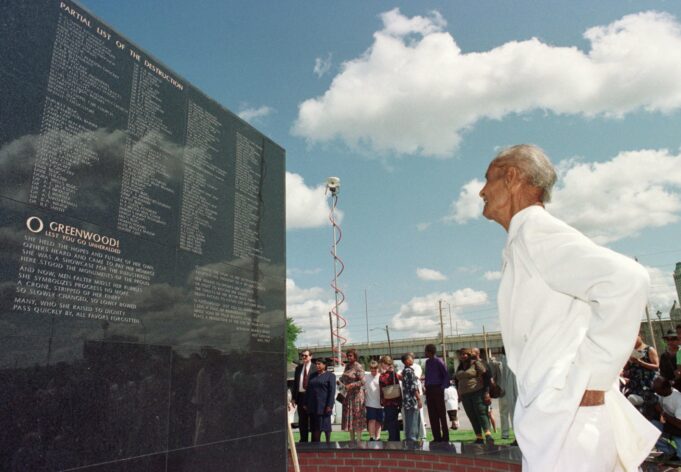Surviving victims and descendants of the 1921 Black Wall Street Race Massacre claimed a tentative victory from the Tulsa County District Court, leaving many hopeful of finally receiving justice 100 years after an egregious case of domestic terrorism razed to the ground one of Black America’s most successful centers of affluence and progress.
Ruling against a motion seeking to dismiss the plaintiff’s lawsuit against the City of Tulsa, Judge Caroline Wall on May 2 allowed the legal process to move forward, based upon an Oklahoma public nuisance law previously used against a U.S. drug-maker.
The suit, filed on behalf of living massacre survivors Viola Fletcher, 107, Lessie Benningfield Randle, 107, and Hugh Van Ellis, 101, seeks compensation for their suffering from both the rampaging White mobs that destroyed Tulsa’s Greenwood District and from local government’s complicity in covering-up the loss of life and property there.
Speaking on behalf of survivors who can no longer tell their own stories, Mr. Cleo Harris Jr., the great-nephew of Ms. Canzaty Smith, a massacre survivor who passed away in 1977, told The Final Call he vividly remembers his great-aunt’s account of being an internally displaced refugee in her own country.
Respected as a high-profile midwife in the Greenwood community before the attacks, Mr. Harris added that his “Aunt Canzaty” was only 21 years old at the time of the massacre and that she continuously suffered the anguish and pain of living while others did not.
“She was (in Tulsa) when it started and she cut her leg on some barbed wire trying to escape, and for 37 years, she was pretty much limping,” Mr. Harris said of his great-aunt who lived much of her life suffering from the injuries she sustained while fleeing the bloodlust of angry torch-wielding mobs.
“My great-grandfather heard about it, and (he) and four of his brothers, came down to rescue her, and they picked her up over their shoulders, (and) carried her about a mile, to the Kansas City railroad tracks where a lot of people escaped going north, (and) hid out wherever they could hide out, until they got her to Porter, Oklahoma,” he recounted.
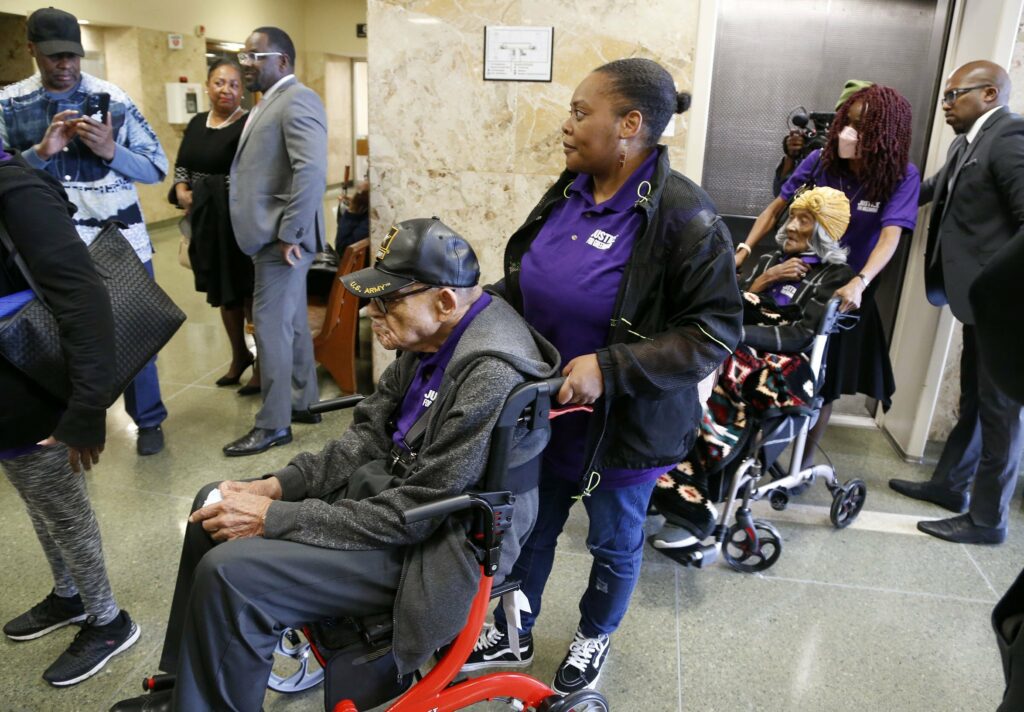
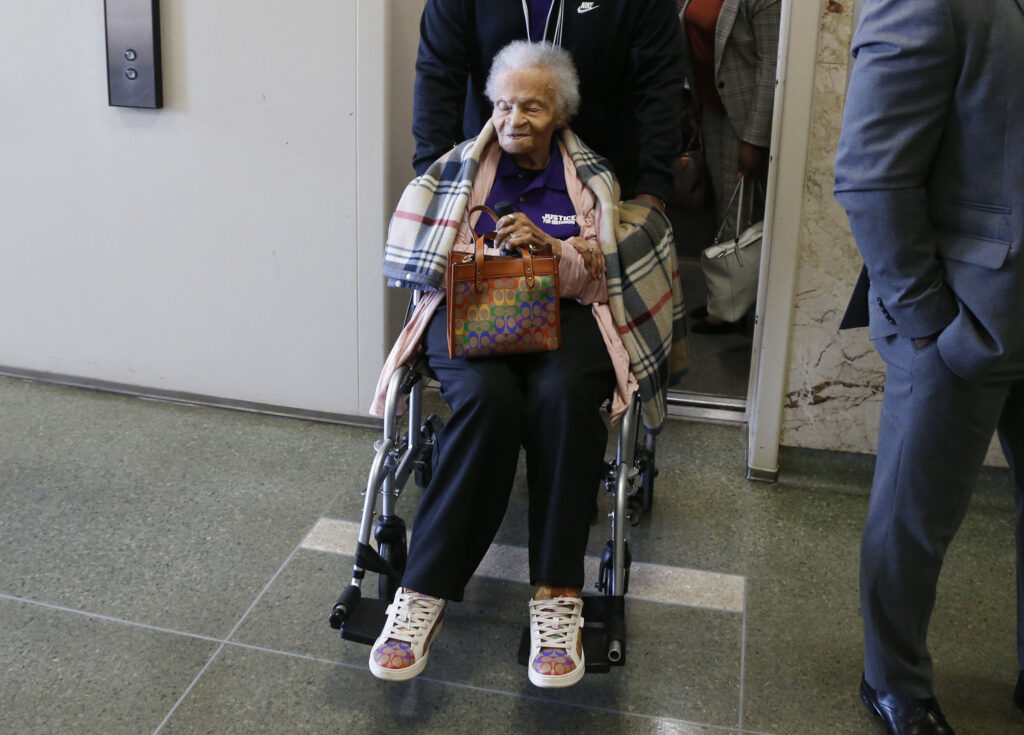
The bigger picture
Representing the last three living survivors during recent court proceedings, civil rights attorney Damario Solomon-Simmons said he witnessed many others pass away during his two decades of working to address their grievances. “I’ve seen so many survivors die in my 20-plus years working on this issue. I just don’t want to see the last three die without justice. That’s why the time is of the essence,” he told The Associated Press.
According to activists who deal with the subject of reparations and restorative justice, stories of lynching and the destruction of entire Black communities from Rosewood, Florida, to Elaine, Arkansas, Springfield, Illinois, and Tulsa, Oklahoma, conceal untold other harrowing stories hidden from public view and the history books.
Keith D. Williams, chairman of the Michigan Democratic Party Black Caucus and an advocate for restorative justice and reparations, told The Final Call that communities continue to suffer the legacy of intentional harms that dismantled or destroyed successful Black communities. The fallout from these atrocities continue to undermine their restoration and require multiple remedies including land grants and tax exemptions as part of a reasonable solutions.
“In order to do this, you have to know the histories of all the harms that were caused to Black folk in these different municipalities, so I did the history in the City of Detroit,” Mr. Williams said. “Detroit is no different than Tulsa, Black folks said we had (so-called) race riots here in 1943 when Black people got killed. We got displaced when we came to work at Ford Motor Company for $5-a-day, (but) got $3-a-day, and then they moved us into “Black Bottom on the East Side of Detroit. Black bottom is where all the Black folk lived, it’s where we did commerce, in Lafayette Park, the I-75 and I-94 corridor,” Mr. Williams said. “White folks didn’t want Black folks living next to them.”
Spearheading a drive for reparations in various municipalities throughout the country, Robin Rue Simmons, a former Evanston, Illinois alderman, founder and executive director of the not-for-profit organization, FirstRepair, and a commissioner with the National African American Reparations Commission under the leadership of Dr. Ron Daniels, said her organization works “nationally to educate and equip leaders, stakeholders, and allies who are advancing local reparations policies that remedy historic and ongoing anti-Black practices.”
Proper research may lead to tangible political and economic solutions, she told The Final Call. Ms. Simmons said the small, albeit noteworthy, May 2 court decision was a win for the three living survivors of the massacre, not only because it validated their 100-year-old grievances, but also because it opened the door for further actions against other entities that built wealth upon the mass murder and forced displacement of persons whose only crime was to be a Black citizen in America.
“That’s why this victory is important, it is an opportunity to advance reparations, but as we begin to peel back the layers and the various institutional accomplices, to the crimes of the massacre as well as the crimes of the trans-Atlantic slave trade, and anti-Blackness in this nation, we’re going to get to insurance companies and banks and other institutions,” Ms. Simmons said of companies that denied the claims of the home, business and property owners who suffered extreme losses from the Tulsa massacre.
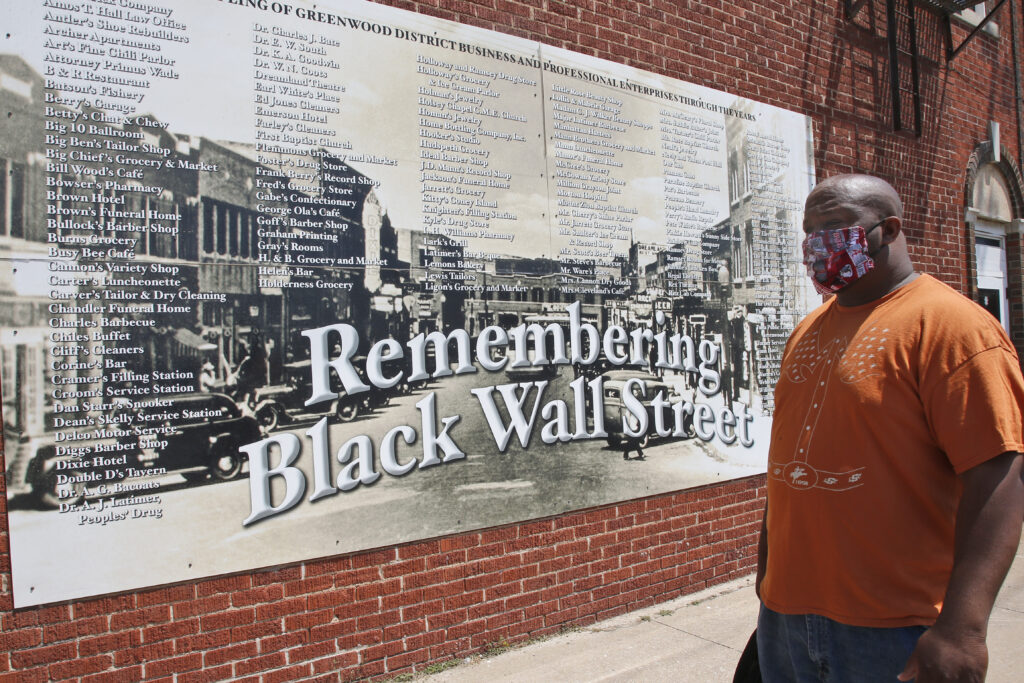
Historians estimate that as many as 300 people died in the Tulsa Race Massacre. Through Tulsa’s Black Wall Street Massacre, at the hands of angry torch-wielding Whites, 40 square blocks burned to the ground, displacing thousands and murdering untold other numbers of men, women and children. All of the carnage stemmed from unfounded allegations of a young White female elevator operator against a young Black man.
Pointing to examples of other racial and ethnic groups receiving compensation for harms suffered in the United States, Dr. Ray Winbush, director of the Institute for Urban Research at Morgan State University, questioned the sincerity of Tulsa’s current Mayor, G.T. Bynum, after the bodies, including those of women and children, were reinterred into a burial site at Oaklawn Cemetery last year—which, as of Final Call press time, remains unmarked.
“What they’ve attempted to do with the three survivors is to let them die, it’s as simple as that,” Dr. Winbush told The Final Call. “They feel that if they all die, it will go away, but it won’t. The whole Tulsa litigation for the past 20-something odd years has been one cover-up after another, not just with the gravesite, but (in) trying to suppress the entire incident in and of itself,” he added. “It continues to show that the White people that are living now, are no different than the White people that did the massacre in the first place.”
Citing internment camps unjustly confining Japanese Americans during World War II and the compensation they received under President Ronald Reagan in the 1980s, and the compensatory damages paid to Ashkenazi Jews after the Holocaust, Dr. Winbush explained how they and their descendants receive tax breaks according to certain state tax forms today.
“I’m here in Maryland right now, and if you are the descendant of a Holocaust survivor, you get a tax break, and these are people whose parents and grandparents were in the European Holocaust.”
Solutions-based leadership
Pamela Muhammad is a Texas-based attorney who has worked with the Nation of Islam Ministry of Justice and currently hosts a weekly podcast called, “A Time for Justice,” on the Elevated Places Network with Student Minister Dr. Ava Muhammad, National Spokesperson of the Honorable Minister Louis Farrakhan.
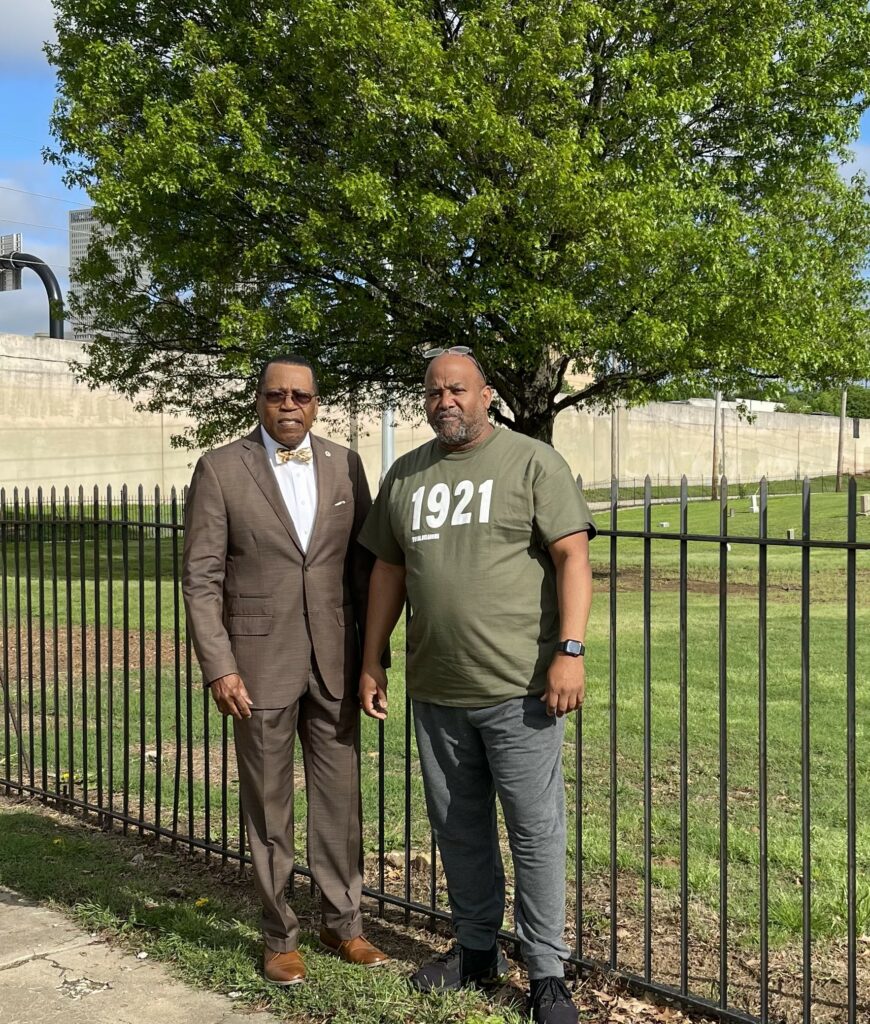
Atty. Pamela Muhammad said it is time for the Nation of Islam Muslim Program to be promoted as the best and only solution to America’s ongoing history of racist suppression, state-sponsored violence and discrimination against Black people.
“The Oklahoma nuisance statute, which is the cause of action this (case) is predicated upon, I am not sure as to whether or not the inheritance rights of those named plaintiffs would actually be able to extend to their blood relatives,” Atty. Muhammad told The Final Call. “But the entire community of Tulsa, Oklahoma, who were aggrieved directly, the causation factor is just extreme. We do know the entire Black community in Tulsa has some standing due to the tremendous loss of the economics and the mental anguish and the failure to thrive in a community (of which) they were robbed,” she said of the city’s legacy of race-based terrorism.
Regarding the centuries of suppressing documented harms and official efforts to sanitize American atrocities toward Black folks through propaganda, entertainment, miseducation and other tools of control, the teachings of the Most Honorable Elijah Muhammad, as taught by Minister Farrakhan, provides a clear solution.
In The Muslim Program’s point number four of “What the Muslims Want,” Mr. Muhammad wrote: “We want our people in America whose parents or grandparents were descendants from slaves, to be allowed to establish a separate state or territory of their own – either on this continent or elsewhere. We believe that our former slave masters are obligated to provide such land and that the area must be fertile and minerally rich. We believe that our former slave masters are obligated to maintain and supply our needs in this separate territory for the next 20 to 25 years—until we are able to produce and supply our own needs.”
Mr. Muhammad continued: “Since we cannot get along with them in peace and equality, after giving them 400 years of our sweat and blood and receiving in return some of the worst treatment human beings have ever experienced, we believe our contributions to this land and the suffering forced upon us by White America, justifies our demand for complete separation in a state or territory of our own.”












